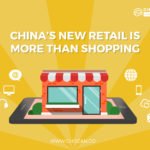China’s 5G rollout is becoming one of the biggest tech stories of the year.
In June 2019, three domestic carriers and a broadcaster in China were given the green light to launch 5G commercial services months before the licenses were expected to be issued indicating an acceleration of the rollout process.
And it would not be long before it is deployed on a wide basis not just in China but globally. Korea has also begun deploying its 5G network and from 2021 onward, 5G will become increasingly common around the world until it replaces 4G as the standard. Huawei is highly involved in initial layouts of the technology within China and elsewhere. ZTE, Nokia, Samsung, and Ericsson also sell 5G equipment.
Currently in China, most 5G trials focus on intelligent robots. In early 2019, China Mobile, the largest telecommunications operator in China, cooperated with Huawei, the acknowledged world leader in 5G, to deploy a 5G network at Shanghai’s Hongqiao Railway Station. 5G smart robots there greet travellers, give consultations and provide a shopping guide. But there is much more to come.
In ideal laboratory conditions, 5G can achieve internet speeds as high as 10 gigabytes per second with only 10 milliseconds of latency. At this rate, an hour-long TV show can be downloaded in only 10 seconds with 5G. The same process takes about 3-5 minutes with a stable 4G connection. This speed makes 5G the next disruptor in lots of industries, including manufacturing, healthcare and, of course, retail.
For retailers, this is a make-or-break moment. With an increased ability to collect data and deploy technologies such as augmented reality and the Internet of Things (IoT), 5G is going to impact every link in the retail world, from the operational back-end to the consumer experience at home.
5G Takeaways
High speeds and low latency are the top benefits of 5G. It enables a 10 fold increase in internet speeds on mobile devices. For context, that kind of speed means it would take 35 seconds or less to download the PUBG mobile app, which takes 25 minutes to download using 4G.
Latency is the amount of time it takes for a small packet of information sent from your computer to reach another computer on the Internet, and then return back to you. Low latency makes it easier to access cloud technology and enables services to offload data from a mobile device’s memory. Latency of less than 10 milliseconds is also ideal for augmented reality (AR), virtual reality (VR) applications and the Internet of Things.
New Customer Experiences: Efficient, Seamless and Personalized
Providing fast, reliable connections while transmitting higher quantities of data, 5G enables seamless, personalized engagement with customers and creates new efficiencies for retailers.
5G also means that fewer people drop out of the retail process along the way. According to Google’s research, 53% of mobile users leave a site if it takes over 3 seconds to load. The average loading time for sites using 4G is around 14 seconds.
With increased speeds, a greater variety of marketing approaches are available too. For example, long-form video ads, live streaming and even virtual reality fitting rooms could be used. Improved customer experiences lead to more conversions.
Immersive experiences will rise to new heights. Interactive fitting rooms, leveraging AR and VR will allow users to try on clothes, request different sizes and ask for immediate assistance by touching specially designed mirrors making in-store service and experiences much more efficient.
Tmall is one of the leading e-commerce platforms for AR and VR. Lots of make-up brands on Tmall allow users to virtually try on lipstick, eyeshadow, eyeliner, and more via AR functions and image fidelity is approaching that of a physical makeup application.
Tmall’s Flagship 2.0 was also launched on June 25th, 2019. Brands can now customize their online stores and consumers can now see personalized home pages based on their previous shopping patterns. Brands can tap into the platforms loyalty programs, make use of brand storytelling options and offer customers the ability to reserve products online and then try them on at a physical store.
JD has partnered with real estate developer COLI (China Overseas Land & Investment) in 2018 to open hundreds of unmanned convenience stores in China. Consumers can access the stores through the JD app, which connects their bank accounts, online payment options and the facial recognition cameras. Users’ movements and preferences are tracked and recorded and smart ad screens in stores show personalized ads.
With data collected, stored, analyzed and deployed at 5G speeds, it is possible to create seamless, personalized omnichannel shopping experiences time and again.
The Smart Back-end Operations
5G supports communication and instant monitoring among a large number of devices, optimizing real-time feedback from back-end warehouses, logistics systems and inventory control, to all kinds of terminal devices in stores, including smart shopping carts. This enables warehouse robots to automatically stock shelves when sensors indicate that shelves are running out of certain products.
It’s believed that 20 billion IoT devices will be in circulation by 2020. With reliable 5G connections and data exchanges, smart back-end operations will significantly improve accuracy and cut supply chain costs.
Empowering Retail as a Service
New Retail, a concept coined by Alibaba’s Jack Ma in 2016, means synthesizing and integrating commerce, technology, physical locations, logistics, and media into massive ecosystems.
It is not only about consumption experiences, but also the retail ecosystems that brands can plug into. New Retail is the biggest of China’s “retail as a service”, where brands have access to crucial data about their sales, consumers and products that allows them to tailor offerings to their customers and have a clearer picture of their own performance.
No matter what opportunities 5G brings, it is clear that companies who can harness it will take the lead.
This article <How is 5G Transforming the Retail Industry> was originally published in Retail in Asia, written by Ashley Galina Dudarenok.
To get deeper insights into Chinese social media marketing and utilizing it to serve your business, join ChoZan, a training and resources platform for Chinese social media marketers.
Please follow our official WeChat account to get more updates about the latest news, feature updates and case studies.

Share this article on your favourite social media





